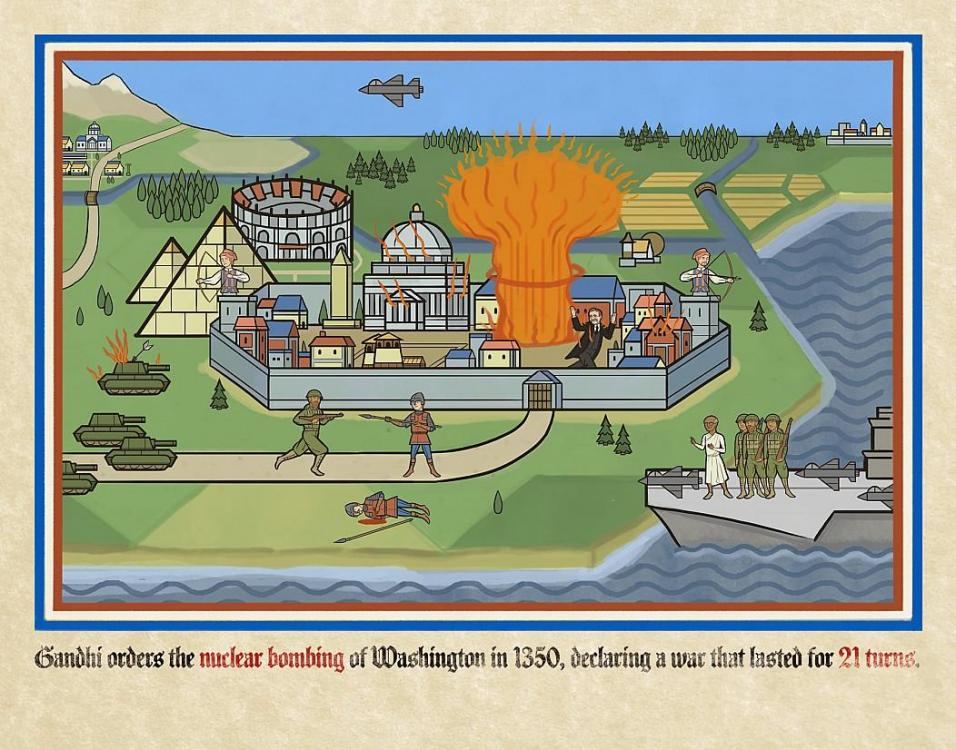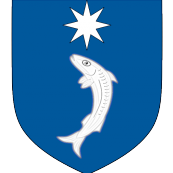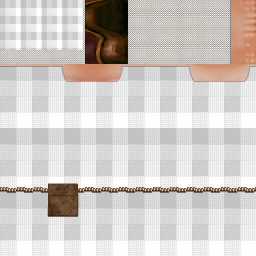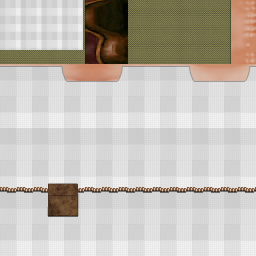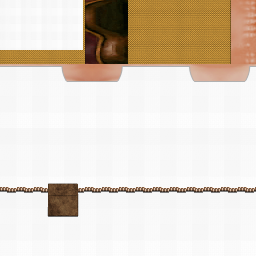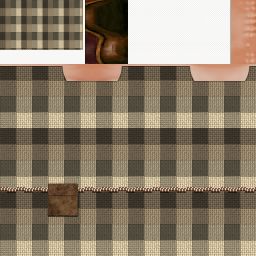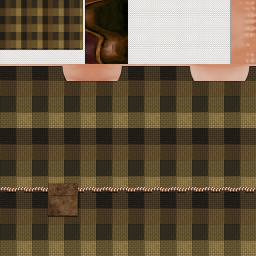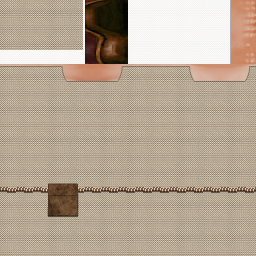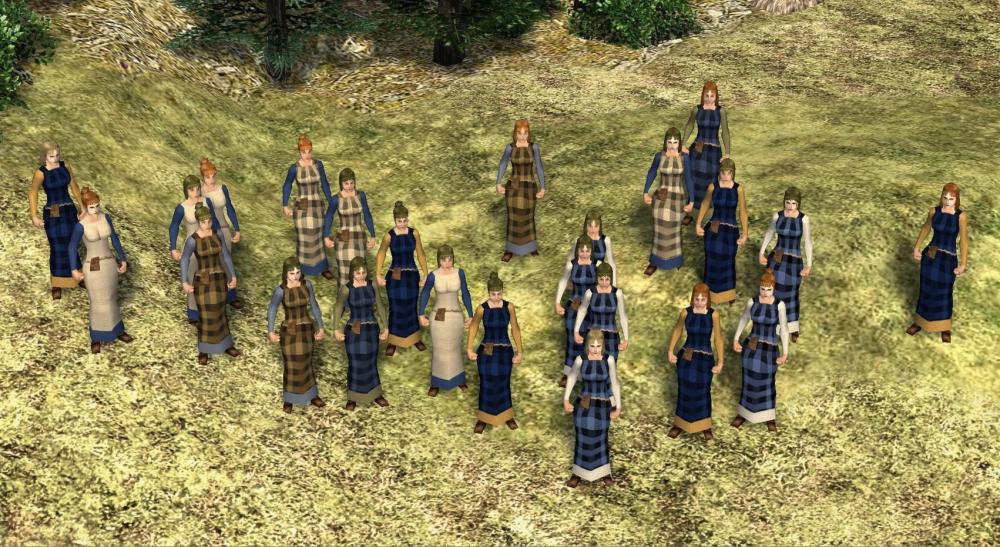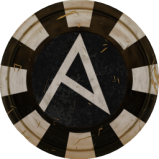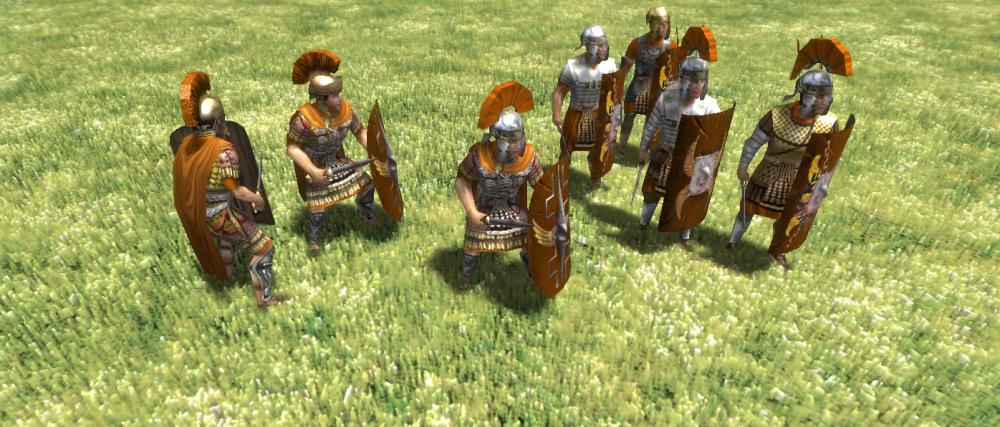Leaderboard
Popular Content
Showing content with the highest reputation on 2018-06-18 in all areas
-
Anyone interested in the Alpha 23 rebundle please try the release candidate here, which fixes and adds a bunch of stuff: https://github.com/JustusAvramenko/delenda_est ^Just download the zip and unzip the folder to the mods folder. (The actual release will remove the temp and art_files folders and any .psd and .git files.) What was changed over the first release: Farm Fields are now Restricted from being built around Civic Centers. Mercenaries are now about 10%~20% more expensive in metal cost. All civs now have Slaves, until they're more culturally differentiated for A24. Elephants cost +1 pop and +5s train time. Most soldiers now have greater Crush armor. You can train up to 5 Scout Cavalry in Phase 1 now, instead of only 2. You can't build a Corral now without first building a Farmstead, which only unlocks 2 corrals per Farmstead. I really wish we could make my Corral trickle/sheep herding idea work, but alas. Wooden Towers now have greater attack range than before. Stone Towers now have greater attack range, greater territory influence, and greater vision range than before. Gauls get the cavalry rank upgrade techs now, at their Stable. Han Government Center now has 3000 health instead of the incorrect 6000. Outposts have more health. For greater consistency, all infantry (melee and ranged) have 40 vision range; all cavalry (melee and ranged) now have 50 vision range. Bolt Shooters +7s build time, +20 wood cost, and +1 pop. Catapults trained from the Siege Workshop +5s train time. Druidic Conclave tech no longer makes Celtic Druids more expensive. Civilian Citizens can now be tasked to attack enemy soldiers and buildings. Spartan Woman now has the same gathering rates as Citizens from other civs. Also, fixed her tooltip. Fixed some hero units so that they can actually be seen. Removed the Roman "Onager" unit which really was just a test object anyway, and was throwing ERRORS. All Delenda Est maps can now be found with the "New" map sort in match setup. Previously, this was inconsistent. New Celtic female textures by @wackyserious. Randomized Celtic male citizen textures. Some cavalry use the right meat gathering animations which didn't before. Tweaked/fixed idle villager button to work better at selecting idle Citizens. A bunch of unit actor fixes, which previously threw ERRORS or were visually messed up. Examples: Spartan Helot Slingers, Principate Roman Auxiliary Cavalry, Scorpio Operator, Oxybeles Operators, cavalry spears being backward, Hoplites standing around after dying, etc. Fixed some buildings, for example the Principate Roman Watchtower missing its model. Removed the "fancy" aura graphics from Temples and other buildings for now, because using the <Footprint> element to do this caused ungarrisoning and hitbox problems which annoyed a lot of people, but didn't necessarily annoy me previously. Fixed cavalry attack_slaughter ERRORS. Some Han Chinese texture, model, animation, prop fixes and additions from Terra Magna. Catapults, the siege engines buildable in the field, are now packable. Mercenary training now requires Town Phase.4 points
-
@Genava55 Might be a weird question but since you mentioned the Rome I mod having traitors in their ranks if I might say can you tell us a bit more about your references ? Maybe you could put up a thread with all the incorrectness of the current Celtic factions with screenshots saying what is innacurate ? Also maybe update the design document for those civ and give some way of improvements.What do you think ? i love those endless discussions about history but I also like productive talking here in the form of making 0AD better.4 points
-
Hi, You are not speaking for all parents out there; please don't kid yourself. Other than that, thanks for sharing your suggestion.4 points
-
Hello @Free and welcome to the forums ! Glad you want to share the game with your children. The aim of the game is to entertain while teaching some history. There is very serious research behind the civilizations, as you can see by the work @Sundiata conducted very recently, and that work also go towards voices. I don't consider units speaking some modern language a good way to respect historical accuracy, as most of the languages that are spoken now are different, and can't possibly represent the faction they can be assigned to. Making Zapotecs speak English is just plain nonsense. If you really want this to happen, you can record voices for every civilization in the languages you want which should cover a few simple sentences you can find here https://trac.wildfiregames.com/wiki/Audio_Voice_List That could make a great mod and we encourage you to do so. Here is a small mod that disables blood from the game entirely. Just drag and drop it on the 0 A.D. executable, or double click on it if you have them already bound to the game. I made it a few minutes ago, so there might be some left overs as it's a few hundred files to check but it should clear 99% of the blood. no-blood-and-gore-mod.pyromod The previous did not consistently have blood because of the great number of iterations and the lack of variants.4 points
-
It's been about a week and a few days, and I'd like to share what I've been doing. It's nothing visually interesting, but those with lower PC specs will probably like it. Most Real Time Strategy games (and in fact most graphically intensive games these days) have a feature called LODs, which stands for Level of Detail. The short of it is, the further away a camera is to any object, a more low-quality, low poly version of that object's model will load. This significantly helps frame rates and performance. Unfortunately, 0AD has not yet implemented LODs, so currently the high poly versions of models show at all times, even when zoomed out to the maximum distance. While this assures everything looks good, people with lower end PC's have reported bad frame rates and terrible lag. Until 0AD properly implements LODs, a small, separate download will be available that replaces the game's models with low poly versions: The might not look nearly as good up close, but from a distance you might not even notice. This should help users that lack a powerful enough PC to render hundreds of high poly soldiers at once.4 points
-
I wanted to make animated blood. Basically a stretching plane using four bones and a decal or some kind of trick. For animals we could use death texture variants like the sheep for units too like medieval total war3 points
-
The game is about conquest, which is about as brutal as humans get. I don't see how the lack of blood would gloss over that fact. The animals thing, too, baffles me. How will children learn where their food comes from, unless you're one of those adults who impose a vegetarian diet onto children? In fact, I was recently thinking about a way to show guts and entrails from animals while they're being slaughtered ( @stanislas69, a prop can show up on the ground). The "milking" thing is a quasi-planned feature, where you can garrison animals into the corral and gain a trickle of free food. But, regarding blood, I think it would be good to have a no-blood toggle option simply for the fact that it is not a rarely-requested feature. It's kind of a low-priority thing, but still floats around out there in the ether.3 points
-
Recently, I have found some interesting data. After seeing that, I wonder that Carthaginian military is less self than more non-self. But still it would hasn't some units which are historically accurate. Again, some of the important embassies are also missing. i.e. About the part of the Carthaginian army composed of proper carthaginian troops -not mercenaries- the argument is very complexEven if Carthage always relied heavily on mercenaries, Carthaginans, Lybo-Phoenicians and Lybians always played a part in the military structure of the army.If Lybians in the ancient period are mercenaries like Spaniards and Celts, with the expansion of Carthage in the African hinterland, gradually became a part of the Carthaginian society, and the term "Lybo-Phoenician" itself became something more variegated, inteded to define both carthaginian citizen or meteci of mixed heritage and Lybians fully influenced by carthaginian culture At the battle of Crimissus (341 B.C.), within various groups of mercenaries, was deployed a force of "ten thousand hoplites with white shields, and for the splendour of their weapons, the measured and disciplined way of marching, were identified as Carthaginians" (Plutarch, Parallel Lives, Timoleon - 27).Writing about the same battle, Diodorus named a particular unit of 2500 men, all from noble carthaginian families, that formed a "Sacred Battalion" or "Sacred Band" (X, 20, 6 and XVI, 80, 4), that have been connected with the theban hoplite battallion with the same name.More or less one century afterward, the situation appeared not so different: even if finding the necessity to rely on the military counsel of the spartan Xantippus, it appears that him gave a better organization to the army, but didn't change basically its approach to the battle: at the Battle of Tunis, the Carthaginians were deployed in a phalanx formation, in the center of the army, distincted from the mercenaries units that were deployed on the right wing (Polybius, Histories, I, 33).Obviously we can't be sure that the phalanx employed at the Battle of Tunis was a hellenistic phalanx or an hoplite phalanx, but the little carthaginian iconography we have for the period depicts a panoply that seems quite hoplitic.However, even at the time of the First Punic War probably Carthaginian soldiers weren't only hoplites: at the battle of Adys, Carthaginian infantry was deployed on rough terrain where, Polybius states, other carthaginian corps, elephants and cavalry, would have been of no use, implying however that Carthaginian infantry was able to operate on rough terrain (Polyb. I, 30, 6-7).That probably implies that at last some "thyreos-bearers" were already in use in the Carthaginian army in that period.In any case, the real twist in the Carthaginian army probably occured during Hamilcar's occupation of Spain. The iberian areas intersted by Carthaginian influence started to present an increasing number of thyreos shields, that in the Iberian and Turdetanian contest is heavily frequent, even over the local kind of shield, the round caetra.A possibility is that in the necessity to enable his army to confront the Iberian hit-and-run warriors in their harsh context, in a specular and parallel manner of wich occurred to the Roman army during the occupation of the harsh Samnium, Hamilcar reform is army in more versatile and maneuverable ways.As a matter of fact, when defining the tactical groups of the African veterans in barcids army, Appian and Polybius will use the word speirai, the same word that is used to describe roman maniples, or in general a maneuverable formation, in opposition to syntagma, that is used to define tactical groups of a phalanx.Moreover, Polybius states that the gaulish king Braneus, helped Hannibal's men during the expedition toward the Alps, and "replaced all their old or worn weapons with new ones" (Pol. III, 49, 11), and also the Libyans and the Lybo-Phoenicians, according to both Polybius and Livy (Polyb. 3.87.3, 114.1; Liv. 22.46.4) at some point of the invasion of Italy were armed with the best Roman equipment looted from the battles of the Trebia and Trasimene, and this clearly states that they were accustomed to use a thyreos-like shield, and all that follows: being accustomed to a shock-and -charge tactic with heavy missile weapons followed by hand-to-hand combat with swords. Looking onward, during the Third Punic War, when Carthage starts to rearm, they produced "Thyreos, Xyphos, Saunion (socketed-pilumlike javelin) and Longche" (Appian, Punike, 93), and in the list of the weapons that Carthage surrended to the Romans, are cited only throwing spears and javelin. There is no reference at all about oplon or doru, and obviously no mention of sarissa pikes at allThe misconception of a Carthaginian army with an "African Hellenistic Pikemen Phalanx" is due to an infamous wrong traduction of Loeb, adopted also by Connely, of the term "Lonchophoroi" in Polybius, that was misinterpreted for a synonym of "sarissophoroi" and so translated like "pikemen".The "longche" used by the Lybian and Lybo-Phoenician wasn't at all a sarissa, but a relatively short spear, with a broad head, used both for stabbing and as a throwing weapon, (Strabo, XVII.3.7), and moreover the the Lonchophoroi in specific weren't the African Veteran line infantry, but light, skirmish troops, paired with Balearic slingers and used in the rough terrain during the Trasimene ambush:"Hannibal, coasting the lake and passing through the defile occupied himself the hill in front, encamping on it with his Spainards and Africans; his slingers and LONCHOPHOROI he brought round to the front by a detour and stationed them in an extended line under the hills to the left, he placed them in a continous line under the hills to the right of the defile, and similarly taking his cavalry and the Celts round the hills on the left, he placed them in a continuous line under these hills, so that the last of them were just at the entrance to the defile, lying between the hillside and the lake."And more:"When the Roman cavalry fell back and left the flanks of the infantry exposed, the Carthaginian LONCHOPHOROI and the Numidians in a body, dashing past their own troops that were in front of them, fell on the Romans from both flanks, damaging them severely and preventing them from dealing with the enemy in their front." (Polybius III, 73, 7)The fact that Polybius use the term "Lonchophoroi" (lett. "spear-bearer") instead of "Akontistai" or "Psiloi", normally used in Greek to define skirmishers, is probably due to the huge versatility of Hannibal's light infantry, probably a mix of caetrati, Celtiberians and Lusitanians (Livy, Ab Urbe Condita, XXI, 57) and Lybians (the warrior depicted on Smirat's Relief in Tunisia, with round shield and spears/javelins, desc), equipped not only with missiles like falaricae(all of them) and soliferrea (the Spaniards), but even with a spear that could be used both for throwing and as a thrusting weapon (cfr. J. Lazenby, "Hannibal's War"), maybe te same "small broad-bladed longchai" that Strabo linked to some Lybian light troops (XVII.3.7). ____________________________________________Base Troops:Libyan Javelinemen (MERC for the first period)Libyan Thyreophoroi Spearmen (MERC for the first period) Libyan Levy Hoplitai (MERC for the first period) Blastophoenician MilitiaCarthaginian Citizen Levy HoplitaiCarthaginian MarinersCarthaginian Citizen CavalryLibophoenician CavalryOscan Mistophoroi (MERC)Apuani Warriors (MERC)Celtic Swordsmen (MERC)Celtic Skirmish Cavalry (MERC)Numidian Skirmish Cavalry (MERC)Iberian Caetrati (MERC)Sardi Pellitti Militia (MERC)Balearic Slingers (MERC)Mauri Archers (MERC)Hamilcar Reform Troops: Libophoenician ThyreophoroiLibophoenician ThorakitaiCeltiberian Cavalry (MERC)Turdetani Scutarii (MERC)Edetani Scutarii Spearmen (MERC) Hannibalic Reform Troops: African Veterans Lonchophoroi (MERC) Ilergete Scutarii (MERC) Celtiberian Scutarii (MERC) Cantabri Axemen (MERC) Lusitanian Caetrati (MERC) Oretani Warriors (MERC) So, my suggestion is to make two new embassies, and add Libyan Javelinemen as Citizen unit and Carthaginian Mariners as Champion units.2 points
-
that's my idea for my mod. Also a variant of the Wonder Victory, is to put a wonder in a certain place of the map difficult to defend2 points
-
This one made me laugh, but not because of you. I tell you why. I already got this discussion a few years ago and someone point me out a post on a thread in the forum kelticos.org. Someone find this press resumee/summary in french and translated it with google. It is true, clearly it mentions a "round shield". Problem, at this period it was very hard to find anything on internet about this discovery. I wanted the publication to verify this because I find it very exciting. Finding a round shield at the end of the Gallic Wars is just amazing and can tell you a lot of things about the weaponry evolution. Contrary to the common belief, there is very few indications of round shields in central Europa at this period, the only ones comes from very far in Poland and Baltic regions. There is small square shields in Jutland, in North-eastern Germany and in Ireland, but nothing that tell you why the round shields become so popular among Germanic tribes during the migrations period. Even during the Marcomannic Wars there is no evidences of round shields. For exemple, in the Thorsberg moor's votive site where there is offerings from 0 to 500 AD, the round shields start to appears only during the 3rd century. Thus for me, this discovery of a round shield in a post-Gallic Wars context was just amazing. Then I took my @#$% to the archeological library of my University. I asked for the 2004 publication of Schönfelder on this tomb and for his original thesis in German from 2000. Since I am from Switzerland, it took one month to get these documents, and do you know what I found? Simply that the person writing the press summary for the city of Agen had misunderstood the findings. It was round umbones. Not round shields. The original thesis conclude on the paragraph about the shield: "Nach den verbliebenen Fragmenten war der Schild von Boé ein gängiger, funktionaler Spätlatènetypus, wie er etwa auch in den Gräbern von Pîtres im Département Eure und Mainzweiler im Saarland gefunden wurde." Meaning it was a common and functional shield similar to two others findings in Gaul. But imagine my frustration to have waited one month and lose two days to read the material in German (not a common language for me). It is why I'm not referring anymore on anything that is not grounded by a publication. You don't imagine the mistakes that appears with this kind of situation. For example, the first mod Europa Barbarorum I, on the first Rome Total War. All the barbarians factions were build using medieval irish tales and the delirium of someone that said he was a historian. Peoples working on Roman and Hellenistic histories, peoples with real knowledge, didn't even realize that an impostor was working on the Celtic factions. Someone who suggested two-handed swordsman, Giant hammer warrior and Irish heavy infantryman with scales armor. Even these peoples believed his information on word. Since the first mod was considerate very historical accurate, peoples took inspiration from their work. It is why you can find some two-handed swordsmen in 0ad. But this thing doesn't exist anymore on the second Europa Barbarorum. You can barely recognize the barbarians factions between the two mods. Because now, the team is very very careful when they are selecting someone for the mod. It was a precision about the Belgians. And the shield wasn't found in a context with what they call "Aylesford-Swarling" culture related with the Belgians. Thus, I didn't consider the find as related with the mainland Gauls. Moreover, the second quote about the La Tène style is what is interesting about the question because clearly this kind of style used on the shield is clearly native to Britain. It is an inspiration from what the mainland celts did. But these findings, with highly decorated shields and mirrors, with this plastic La Tène art, are not known outside of Britain. And as I said, I don't understand why people are referring about this shield as a round shield since it was clearly riveted on something. And there is a couple of shields totally preserved in Britain but none are round. I was maybe a bit rough by saying it is a paralogism. I don't say it is not common sense and logical. It is just that we are, us the moderns peoples living in an industrial world, efficiency focused in our way to think. By the example of the use of rounds shields in celtiberian and italic cultures, I wanted to express something I have maybe misaddressed: the traditions for the use of weapons need to fit the cultural view of warfare. The round shields were used because these peoples wanted to use round shields. There is innovation in barbarian cultures, but they are always grounded with military and cultural changes. For example, the Gallic sword is getting longer from 300 BC to 30BC. Why? Because the elites warriors evolute slowly from an infantry and chariot based warfare to a cavalry based warfare. Because it is simultaneous with an increase of horse in warrior burials and the horses were becoming bigger. Furthermore, the sword tip were sometimes rounded in warrior burial. It seems that the elite warriors were more often on horses than on foot. About the oval shields without umbones, there is evidence even in very late reliefs like this one: Oh sorry, this paragraph is referring about La Tène evolution. For the the Hallstatt-LaTène boundaries (550-450BC), it is a more complex talk because it is based on the destruction and the desertion very sudden of several aristocratic places. There is also burial practices change during this moment. Notably, there is a huge increase of weapons in the more modest burials. The society seems to change from a peaceful to a warfare oriented society. But it is very complex because there is a regional origin proposed for this sociocultural process (the Marne region) and it seems it spread rapidly from this place. But in this region, the evolution from Hallstatt to LaTène was a bit more slower (and a bit more older). There is regional specificity but they are more subtle. The Britons are clearly different because it is not admitted they are from a La Tène culture for most of the british historians. There is clearly a connection because it was the Golden Age of the mainland Celts and everybody started to use their weapons, potteries and crafted items (it is why we can found La Tène items in Jutland and in Ukraine). The Britons have different burial practices and different architectures. The La Tène burials and architecture were only found in the Arras culture in the eastern part of Yorkshire. It is why some british historians are very opposed with the old Franco-germanic theories of La Tène spreading by invasions. Their views are more based on acculturation. The first time I read the book of Cunliffe about Iron Age in Britain, I was surprised how it is different from the common view of the french literature. I think there is a language barrier for the old historians that is hard to overcome. Cunliffe is very bad when he is writing about central European findings and french historians like J.-L. Brunaux are very bad for the british findings. Gladly, it is changing thanks to young peoples. And it is why I'm saying that the use of weapons are more based on cultural views. For me, saying the Golesecca culture could have transmitted the round shield to the La Tène culture by the same time they got dominated and their culture disappeared is weird. There is regional specificity of the Italian group and there is survivance of pre-La-Tène culture in some place. Even during the Roman Republic. But all the time, the specific findings were found in this place. Never outside their sphere. They are a minor and dominated culture, how they could influence another culture in his golden age? For example, in Giubiasco there is a warrior burial with a helmet that seems anachronistic for the period. The warrior is even equipped with a La Tène shield and a Roman gladius. It is known that this place show some survival of the Golesecca culture and some Lepontic unknown culture. The region was never been densely populated before the Roman Empire. Even during the Roman period, when they are officially controlling the region, you can find warrior burials with mainly La Tène items. Because, I will quote a blond modern politician, this is a "shithole country". Besides the joke, the region is really weird for historical findings, always a bit disconnected of the rest of the world. Thus even by considerate the exceptional findings and the rare survival of previous culture, I don't see anything that could have spread into the La Tène culture. It stays always in a local scale. I'm really trying to understand this view for common bilateral cultural sharing of warfare items. But I don't have any example that fit in. Even in the Balkan where there is a huge mess and patchwork of different cultures at this period. More often there, the cultural sharing of warfare items is unilateral, i.e. peoples are starting to use La Tène items. For your pleasure, here the Giubiasco warrior.2 points
-
Well now you have a no blood mod. I could upload it to mod.io, but that's work. Kushites add blood, some, not all units like chariots, and animals had it, so I unified everything to have it.2 points
-
2 points
-
2 points
-
Besides conquest, there is also regicide (where killing one thing on the screen is sufficient for victory), but also Capture the Relic and Wonder victory where one can win without anyone being harmed. More gamemodes are planned, such as being the first to gather or trade a specific amount of resources. That proposal is well represented on the forums in fact. 0 A.D. isn't a farming simulation, but one can easily create mods doing that. This is inevitably violent unless one can talk the enemy into surrendering with diplomats. It's either the Mandala effect or the previous alphas didn't have this blood. My personal opinion is that I want to see a more realistic depcition of what happened in history and that ultimately requires depcition of decapitated, halved bodies, gore and intestines, the worst things a human could possibly see. This would teach us that romans and greeks were not only those well meaning inventors of democracy and civilized world but genocided their way to survival or victory. This should be an opt-in addition however, it could be a mod, but our artists said it would be hard to implement. Maybe something can be done with splitting files more. Well this is greek and latin. What prevents people from comprehending it is missing experience in these languages. People like me who only speak english and the native language would however benefit a lot if the words that they speak were visible somewhere, so that one can look them up and translate them. That's what I would call good learning, especially when one wants to become familiar with ancient civilizations, our ancestors. Perhaps there could be a userinterface page that lists all sentences and plays them when clicking on them.2 points
-
Right, just imagine a Starcraft mod or something using that kind of feature for Vespene Gas mines. Hell, I'd love to add something like that to DE, where you claim Stone Quarries and Metal Mine Shafts by building a Storehouse on a slot.2 points
-
2 points
-
And a phabricator revision with a potential fix: https://code.wildfiregames.com/D15821 point
-
1 point
-
1 point
-
1 point
-
This is a really sweet suggestion though Personally I'd love to see more: Just for the sake of realism, But a semi-official PEGI 6-mod (or in-game setting) would indeed be really nice for the little ones as well1 point
-
@wackyserious Part of my change was reverted, so that's "normal"1 point
-
So, today was my first day at the University. I'd say I'll be having a rough schedule for this semester. Our semester break was set on the third week of October. I'll still be around, maybe during the evening (GMT +8:00) when I get home, I will slowly try to consolidate recent works and new ones. I might transfer my works on the computer that I bring with me within the coming weeks. Good luck to everyone!1 point
-
1 point
-
A vague yet direct reference to a round shield from the 1st century BC Gauls at Agen. As I said, actually finding intact shields from this period is very hard, no matter the type, but apparently a round shield has been found in a La Tène context at Agen. Nice quotes, but I don't understand how they refute what I said... I said Belgic influence in Britain begins in the 2nd century BC (perhaps not 200 BC, but 120 BC is still 2nd century BC...). I also indicated that La Tène style probably predates Belgic influence. The point is that La Tène came from the mainland... I didn't say that. We're talking about the material culture here. My whole point from the beginning is that the La Tène period equipment from Southern Britain gives us clues about the equipment used by mainland Celts as well, because La Tène was so widely spread (not identical, but similar)... Maintaining the round shield for skirmishers was just a suggestion to differentiate them from the more prestigious noble warriors or dedicated warrior classes carrying oval/hexagonal shields in-game. I was obviously referring to the more complicated and ornate oval and hexagonal Celtic shields more commonly depicted, often with umbone, as opposed to what non-nobles would have used. The Celtic round shields depicted in historical reconstructions and seen among the Golasecca and Castro cultures are clearly smaller than the oval and hexagonal types. They use less material and are less cumbersome to put together (and handle) simply because they're smaller. Not a paralogism, just common sense. That having said, I'm not opposed to wicker shields... That's 2 centuries, as I said, not a few decades. Regional evolutions might have happened fast, but that doesn't mean La Tène became uniform across Europe with a snap of the fingers. Also, standardization in craftsmanship doesn't mean uniformity in distribution of equipment. The way equipment is distributed is not equal across the Celtic world, not even in La Tène period. There were clear and noticeable differences between those Celts living close to the Mediterranean, vs the ones in the interior, vs the Belgae vs the Britons. Environmental differences, accessibility to raw materials, proximity to non-Celtic groups, etc, result in differences in material culture, even if they were wearing the same helmet or whatever. But again, this is besides the point. My point from the beginning is that they were actually similar enough, to draw inspiration from various mainland Celts to create the Gallic faction in 0AD, e.g. round shields are ok (they just shouldn't be overly prominent)...1 point
-
People are complaining that the generic biomes are ugly. It's really hard to fix that when they're defined as json. The json-defined biomes also present a lot of really unfortunate limitations, like only allowing for 2 kinds of huntable animals and (I think) 2 kinds of trees, as well as preventing the use of more complicated mixtures of layered texture patches and things of that nature. IMO the json files should just point to a js in a separate directory, which could be loaded to provide some basic global variables for common textures as well as a biome prototype with a standardized interface that could provide features like highly tunable (ie specific to the biome) texture decoration, more biome-specific trees and a wider variety of huntable animals, especially for the savannah biome. That would also allow map-specific biomes to merely fill the global variables that the map uses, allowing for easier customization without the restrictiveness of the generic json schema.1 point
-
Since you're already working on procedural map generation code, take a look into the rmgen/rmbiome/ folder. Like the rest of the parent directory, it was refactored in alpha 23, because it was an inextensible mess before. Basically the generic biome system is only a vocabulary with some specific variable names and an optional JS function that is called. The map-specific biomes I've seen several thousands of lobby matches, and experienced very heterogeneous feedback, so it leaves an odd impression to speak in the name of all people. While it's ok to have a basic set of generic and ambiguous maps, to me the map design stage was missing when deciding to use generic biomes. In Alpha 20 _kali's rmgen2 maps (Ambush, Frontier, Stronghold, Harbor, ...) maybe doubled the number of generic biome maps, it made something repetitive twice as repetitive. In Alpha 21 _kali and me introduced some very good maps (Red Sea, Mediterranean), but also few maps that are out of place geographically (Amazon) or historically (Howe Sound). For many older and newer maps, the author only had an algoirthm in mind. But the vision of 0 A.D. and it's specifically defined geographic and historical context can only be to let a player relive history. To me it's not in line with the vision of 0 A.D. to not think about specific geographic locations and historic sites. Therefore in Alpha 22, a map that originally was just an aegean sea copy with the generic autumn biome, became Danubius, a certain place at a certain time of a certain scenario with a unique character. Alpha 23 maps took this further and implemented only specific sites for Kushites: Jebel Barkal, Lower Nubia, Fields of Meroe, Elephantine and Greece Hellas, Dodecanse. I have a clear vision to take this to the next level(s). Trying to improve random maps that are bad by design is a good starter task to familiarize oneself with the code, but it limits the potential for improvement one can tap into.1 point
-
1 point
-
When I mean capturing animals, I mean the simple way in AOK, where if one of your units came within a minimum range of the animal, it would switch to your side (with a short "cowbell" sound effect, one strike). Converting units with Priests and such, ("Wololo") is much different. I think the problem lies in terminology.1 point
-
1 point
-
Hi, I'm new to the forums but I've been playing the game for a while. I love everything that you guys are doing with the Carolingians, the buildings and units are beautiful. If I may offer two suggestions, I noticed a lot of the reference pictures on this forum are recreations that tend to be anachronistic in the use of scale armor; not that it wasn't used but the predominance of it and some of the designs aren't historical. The other suggestion, would it be possible to implement a Schola unit with a Roman cuirass? As it's how they're usually depicted in period artwork, it would be nice to have a game implement that.1 point
-
A bit of an update since I've had the opportunity to work on my own mod I've gotten a much better picture of engine internals I now have a better idea of how things work and where draw calls are coming from. 1. Unfortunately we cannot drop legacy support unless we can successfully track down the glsl crash that some people are still experiencing, and thus far no luck getting someone with technical knowledge to reproduce it. 2. The reason why a lot of units and buildings take up a lot of draw calls is because they use a lot of props as sub-objects. The props use a separate model and texture from the main object which means that multidrawelements would not do us any good. However for props which are rigid (which is most of them, except for heads maybe, although I haven't paid that much attention to the animations) we could most likely use drawinstanced instead, which would amortize away most of the cost of drawing units/buildings when there are a lot of them. The good news is that those things probably consume the majority of all draw calls, so we could get the total number per frame down to a very small number.1 point
-
Was thinking the same Could work pretty well for nomad mode. Now having the ability to build buildings on very specific sites would be great bridges or no bridges implemented You could make a bridge entity that can be built and garrisoned over water on specific sites. Even draw bridges1 point
-
Very nice. Maybe a couple of short sleeve and sleeveless variants?1 point
-
1 point
-
1 point
-
1 point
-
When will the Alpha 24 version come with error correction? i have a Mac and the multiplayer problem is really annoying. PD: The game is insane, good work. Im a fan <31 point
-
What if we add a second-rate healing ability to female citizens? Maybe a technology that can be researched at houses to unlock this ability. This healing ability will function like a "tend to the wounded" ability, where female citizens can patch up wounded citizen-soldiers (this will need a new animation) at a slower rate compared to regular healers, maybe like 1hp per second. This could also work like how camp followers function during battles, where fighting men are taken care of by the non-combatants after and before a battle. We could also add an AoE battle performance reduction aura to female citizens so that when fighting nearby friendly units, citizen soldiers will perform worst (because friendly non combatants in the battle area are added liability to the fighters)1 point
-
1 point
-
1 point
-
1 point
-
1 point
-
1 point



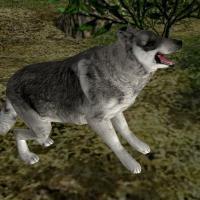
.thumb.png.ce58cea22940c255f5b0a735d5abee36.png)

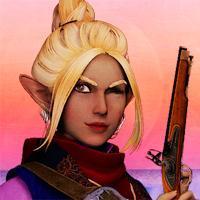
.thumb.jpeg.ff082a55e7c36ac78e97d2ede172716f.jpeg)
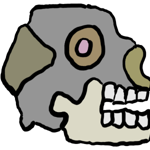
.thumb.jpg.b21ca1d0c15fb56b42c39b25a0a40815.jpg)
